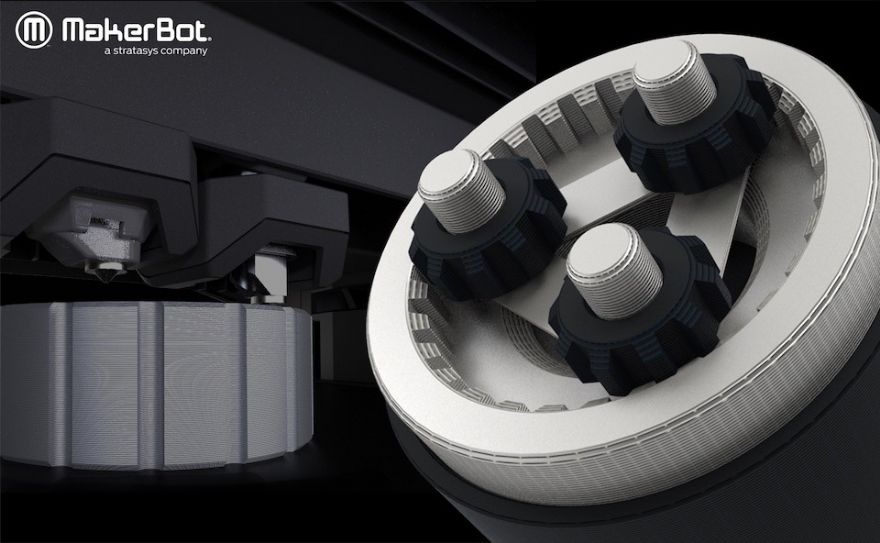 MakerBot
MakerBot, a Stratasys company, has announced that the BASF Ultrafuse 316L stainless steel material from Forward AM has been ‘qualified’ for the MakerBot LABS Experimental Extruder for the MakerBot Method 3-D printers.
Moreover, MakerBot says that with an open materials platform and a growing portfolio of advanced engineering-grade materials, Method is now the only industrial desktop 3-D printer in its price-class with a heated chamber that can print polymer, composite, and metal materials.
The Ultrafuse 316L stainless steel material combines the levels of strength, rigidity and durability needed for a range of applications, including functional prototypes and manufacturing tools.
Available using the MakerBot LABS GEN 2 Experimental Extruder, this metal-polymer composite material provides Method users with an accessible and cost-effective option to experiment with metal 3-D printing applications, without making the significant investment typically needed for a dedicated metal 3-D printing solution.
MakerBot said: “3-D printing stainless steel can also shorten the time it takes to produce parts, further reducing operational costs compared to traditional methods. Method’s heated chamber and ability to control the speed at which a part cools down during the printing process can also help reduce the risk of delamination.”
Once the part is printed with BASF Ultrafuse 316L, it can then be sent out for ‘debinding and sintering’, which turns the part printed with the composite material into solid stainless steel.
Final parts can achieve up to 96% of the density of pure 316L metal material. Users can produce lightweight, hollow metal parts with high tensile strength compared to polymers that would be difficult to produce in other ways.
Johan-Till Broer, MakerBot’s vice president of product development, said: “Our customers have expressed interest in exploring metal 3-D printing but have been deterred by the high costs and extensive processes of traditional metal 3-D printing solutions.
“By supporting a metal filament as part of the MakerBot LABS programme, customers now have an easier and more affordable way to experiment with 3D printing metal before investing in a full printing, debinding, and sintering solution.”